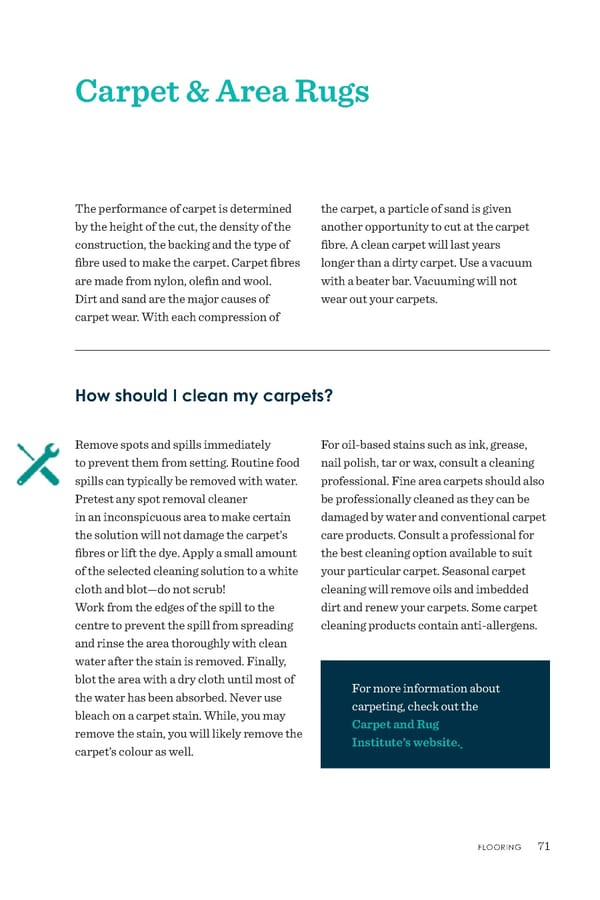Carpet & Area Rugs The performance of carpet is determined by the height of the cut, the density of the construction, the backing and the type of fibre used to make the carpet. Carpet fibres are made from nylon, olefin and wool. Dirt and sand are the major causes of carpet wear. With each compression of the carpet, a particle of sand is given another opportunity to cut at the carpet fibre. A clean carpet will last years longer than a dirty carpet. Use a vacuum with a beater bar. Vacuuming will not wear out your carpets. Remove spots and spills immediately to prevent them from setting. Routine food spills can typically be removed with water. Pretest any spot removal cleaner in an inconspicuous area to make certain the solution will not damage the carpet’s fibres or lift the dye. Apply a small amount of the selected cleaning solution to a white cloth and blot—do not scrub! Work from the edges of the spill to the centre to prevent the spill from spreading and rinse the area thoroughly with clean water after the stain is removed. Finally, blot the area with a dry cloth until most of the water has been absorbed. Never use bleach on a carpet stain. While, you may remove the stain, you will likely remove the carpet’s colour as well. For oil-based stains such as ink, grease, nail polish, tar or wax, consult a cleaning professional. Fine area carpets should also be professionally cleaned as they can be damaged by water and conventional carpet care products. Consult a professional for the best cleaning option available to suit your particular carpet. Seasonal carpet cleaning will remove oils and imbedded dirt and renew your carpets. Some carpet cleaning products contain anti-allergens. How should I clean my carpets? For more information about carpeting, check out the Carpet and Rug Institute’s website. FLOORING 71
 ANHWP Care & Maintenance Guide 2022 Page 72 Page 74
ANHWP Care & Maintenance Guide 2022 Page 72 Page 74